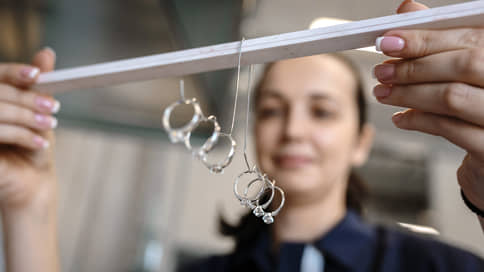Pawnshops are asking to reschedule mandatory labeling of jewelry displayed for sale in storefronts
[ad_1]

Pawnshops are asking to postpone the deadline for all jewelry in their windows and inventory to be labeled from September 1, 2024 to January 1, 2027. Industry participants complain about queues at the Federal Assay Office, which carries out marking, rising costs and risks of decreased profitability. Meanwhile, the chamber believes that pawnshops simply “didn’t deal with the problem in a timely manner” – the deadline for introducing the markings has already been postponed several times.
The National Association of Pawnshops (NOL) appealed to the Ministry of Finance with a request to postpone the mandatory labeling of jewelry displayed for sale in storefronts, as well as jewelry balances, to January 1, 2027. Current regulations require all products to be labeled by September 1, 2024. Kommersant got acquainted with the text of the letter sent by the association to the ministry in February. The Regional Association of Pawnshops also made a similar request to the Ministry of Finance, but already in March, Kommersant’s interlocutors in the market clarified.
NOL in its appeal claims that the Federal Assay Office is overloaded with marking new jewelry and will not physically have time to process the 80 million pieces of jewelry that are currently in pawnshops. In addition, market participants fear that the labeling process will require significant costs: currently they are estimated at 10 billion rubles. for a total product portfolio of 60–75 billion rubles. (see “Kommersant” dated February 26). Pawnshops also complain about the lack of devices for reading marking microcodes, which can complicate the turnover of jewelry.
Gold pawns, predominantly in the form of jewelry, account for 85% of the pawnshop market. According to estimates by the Federal Assay Office, non-repurchase accounts for 20% of the total volume of jewelry that is pledged. On average, 50% of unsold items are eligible for sale.
The profitability of the pawnshop business with the introduction of labeling will decrease, agrees Artem Evstratov, co-owner of the First Jewelry Pawnshop chain, since the turnover period for goods will significantly increase: “If now a pawnshop could immediately put it on display after the expiration of the grace period, now it will take from two months and more”. Costs for logistics, security, and equipment will increase, he adds.
Small regional pawnshops will suffer the most, Mr. Evstratov clarifies, “at least those who want to remain in the legal field and not sell jewelry under the counter.” Fines for lack of marking amount to 300 thousand rubles. to the organization.
There are also difficulties in submitting products for marking to the Assay Office – there is a long queue, reception is only on certain days, adds Artem Evstratov. Registration for marking is now only available for October-November, confirms Stanislav Boronin, general director of the Fianit pawnshop chain. “This deprives pawnshops of the opportunity to sell unclaimed collateral through the storefront. Of course, it is possible to sell precious metals as scrap, but the income of pawnshops will decrease significantly: the markup when selling through a storefront is 20–30%, the markup on scrap is 7%,” he says.
The Ministry of Finance did not respond to Kommersant’s request. The Federal Assay Chamber believes that pawnshops themselves are to blame for the current situation. “The main problem is that everyone waits until the last moment, and this affects the length of the queue,” they explained. “Initially, the deadline for marking leftover jewelry was set for March 1, 2023, then they were postponed to March 1, 2024, and then again – on September 1. The next transfer must be assessed from the point of view of the risk that the jewelry will again remain unmarked. If market participants were concerned about this in advance, a year, six months before the deadline, there would be no bottleneck effect.”
[ad_2]
Source link





